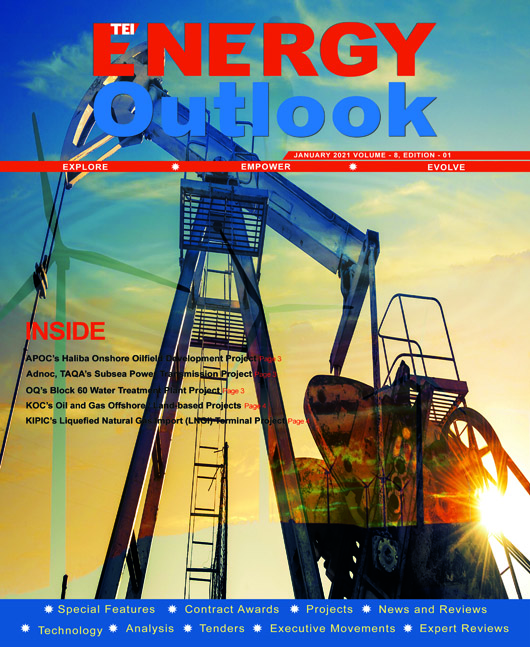
Project Activity in the Middle East Energy Sector
The Covid-19 pandemic has led to a collapse in government revenue and project spending. The project contract awards across the Middle East and North Africa (Mena) region slump to 20% to about $50.4bn in the first six months of 2020, compared to $62.7bn of awards in the same period in 2019.
With oil prices recovering and regional deficits expected to start shrinking from 2021, markets are now continuing on a rising trend. Though, the region faces a shortfall in funding, but the project opportunity remains vast. In H1-2020, projects worth $855.6bn were under design and bid and about $682.7bn-worth projects were under execution across the Middle East region.
Saudi Arabia and UAE are by far the biggest projects market in the region. Saudi Arabia has an active pipeline of about $1.1tn-worth of projects that are planned but not yet awarded. About $58.4bn of projects were at some stage of tendering at the end of Q3, 2020.
With about $23.2bn-worth of projects in tendering, the power sector accounts for about 40% of projects likely to be awarded in Saudi Arabia in 2021, particularly in renewables.
Riyadh plans $10bn Renewable Energy Programme with the capacity of 13GW. The solar power plants project under the programme is in bidding stage. The Kingdom’s first wind farm, 400MW Dumat Al Jandal, is being developed by a consortium led by France’s EDF Renewables and UAE-based renewables firm Masdar. It is expected to be completed in 2022.
Saudi Arabia is leaning heavily towards hydrogen as a power source to satisfy its growing power demand while reducing emissions. The $3.5bn Green Hydrogen Production Project by ACWA Power in partnership with Air Products & Chemicals Inc. and NEOM will feature a 4GW wind and solar power station. Electricity generated by these renewable sources will be used to produce 650 tonnes of green hydrogen per day.
The country is pushing ahead with ambitious upstream and downstream plans to increase production capacity and to produce higher-value refined oil and petrochemicals products.
Scheduled for completion in 2025, the $20bn Marjan oilfield development project is expected to add 300,000 barrels per day (bpd) of Arabian Medium crude production from the field, apart from producing 2.5bn standard cubic feet per day (bscfd) of gas and 360,000 bpd of ethane and natural gas liquids (NGL).
The second-largest projects market in the Mena region, the UAE, has the biggest pipeline of oil and gas projects, with $28.6bn of contracts being tendered, including $18bn of gas projects.
Abu Dhabi’s Supreme Petroleum Council recently approved Abu Dhabi National Oil Company’s (Adnoc) huge capital expenditure budgets of 448bn dirhams ($122bn) from 2021 to 2025.
The major ongoing projects include $15bn Hail and Ghasha Sour Gas Field Development project, which aims at producing up to 1.5bn cubic feet per day of sour gas plus additional condensate. The project is intended to increase the UAE’s domestic gas production by 18%.
In 2018, Adnoc announced plans to add a third refinery of capacity 600,000 bpd, as part of a $45bn downstream development investment to develop flexibility in refining and processing other grades. The new grassroot refinery will bring capacity of the entire complex to a total capacity of 1.5mn bpd - making it the largest in the world.
With $44.4bn of projects under tender, the power sector accounts for about 16% of the market. One of the major power project include Barkah nuclear power plant, which recently started its first unit. The $24.4bn development is expected to add 5.6GW of capacity to the grid when fully operational, meeting a quarter of the country’s energy needs by 2030.
Regardless of the pandemic challenges, the project activity across the Mena region shows sign of improving, with countries investing steadily in diversifying and expanding their economies.
Editor